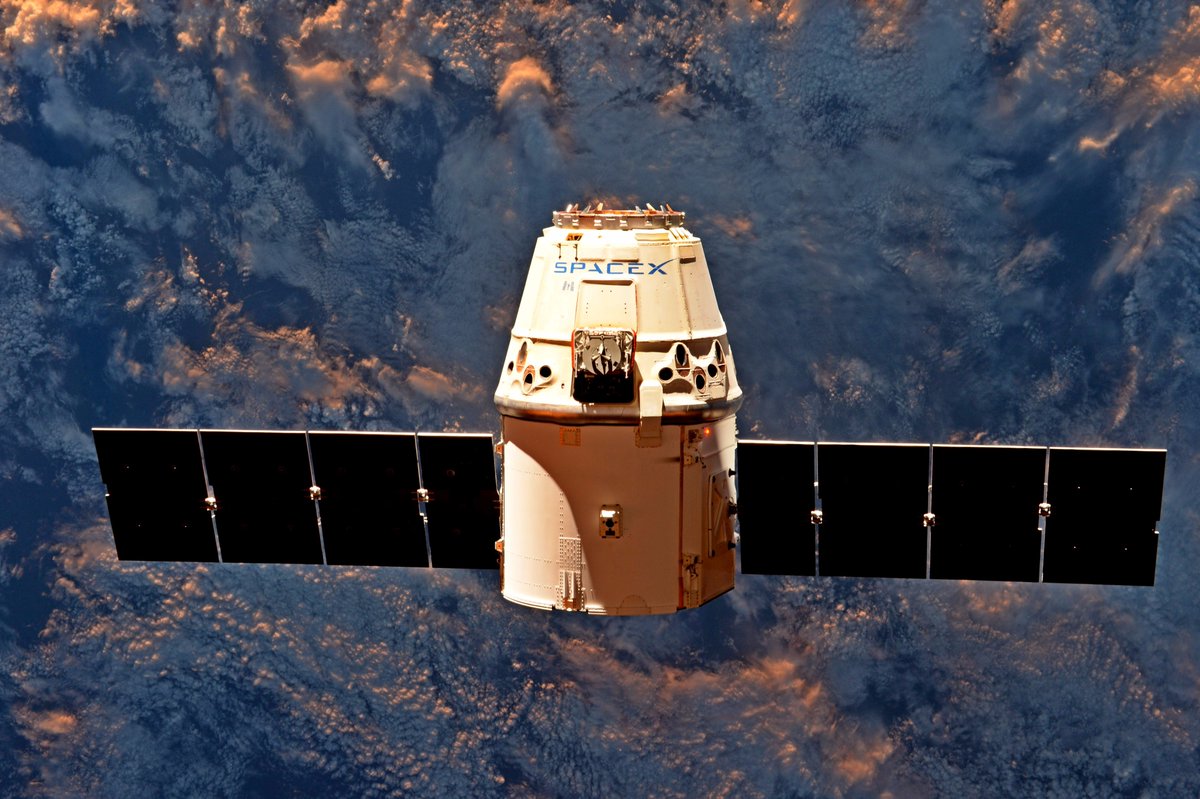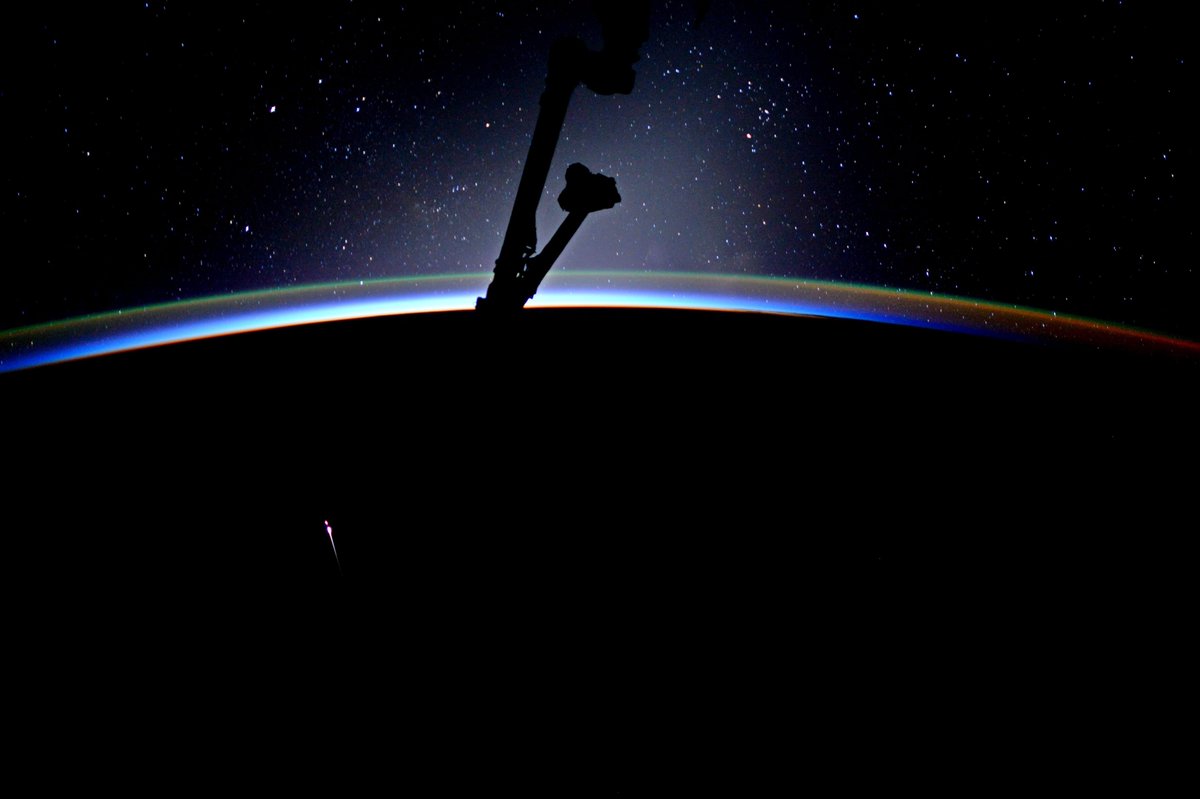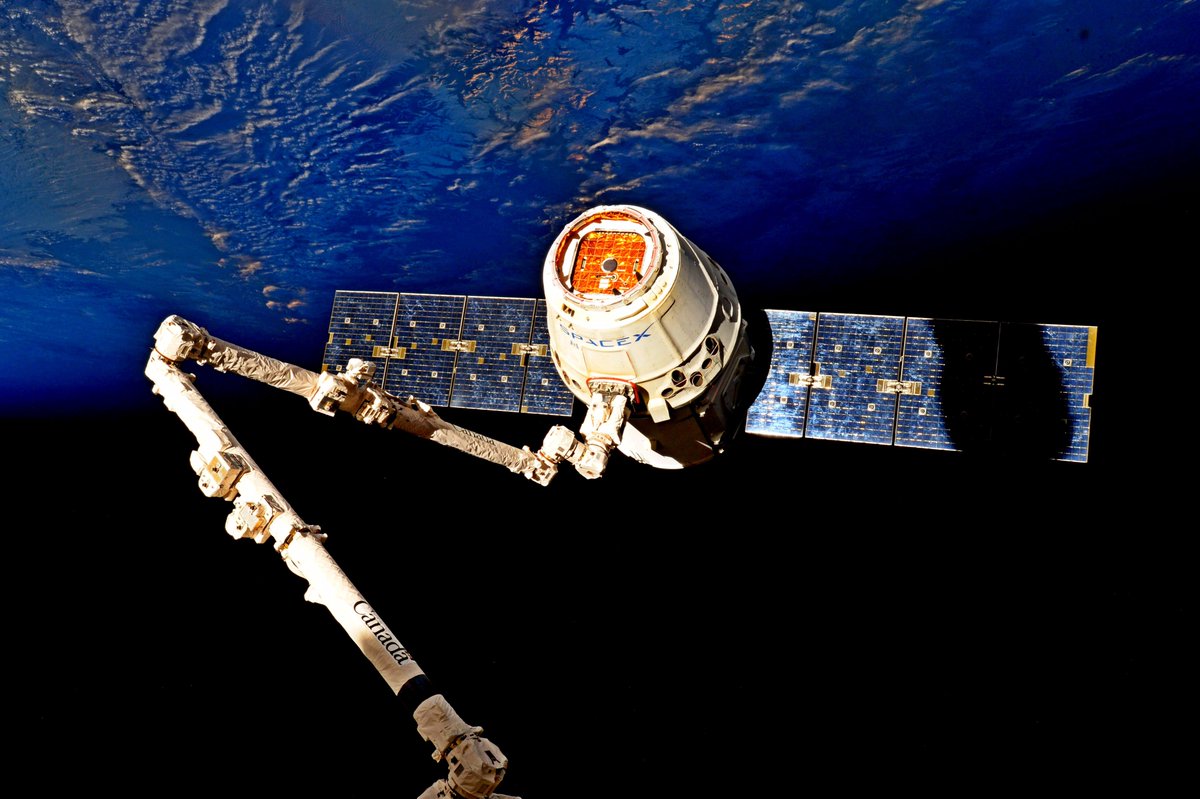'There Goes Dragon': ISS Astronaut Snaps Incredible Shots of Departing Capsule

Astronaut Jack Fischer caught some amazing pictures of SpaceX's Dragon cargo capsule leaving the International Space Station today (July 3), and shared the images on Twitter.
The first two pictures show the Dragon space capsule attached to the ISS' robot arm, called Canadarm2, and the capsule moving away from the station. The last one shows a silhouetted Earth and the Dragon streaking through the atmosphere on its way down.
The Dragon capsule, built and launched by Elon Musk's private spaceflight company SpaceX, is the first private cargo spacecraft to make a second delivery to the station. The vehicle was refurbished following its first delivery mission, which launched in September 2014.
"And there goes #Dragon … Goodbye to our 1st return visitor since Atlantis in 2011--Come on back anytime, we’ll leave the lights on for you!" ;Fischer tweeted about the departing vehicle. His tweet refers to the final flight of the Space Shuttle Atlantis, a reusable crewed vehicle that operated for almost 25 years.

The space station released the Dragon spacecraft at 2:41 a.m. EDT (0641 GMT) for its 5.5-hour journey back to Earth, where it splashed down at 8:14 a.m. EDT (1214 GMT). The Dragon capsule launched to the space station on June 3.
The Dragon ferried some 6,000 pounds (2,700 kilograms) of cargo to the space station and brought back 4,100 pounds (1,900 kg). Some of that returning cargo includes experiments that were sent to the space station previously, which will be analyzed in laboratories on Earth. Among the experiments were samples from mice used in testing an osteoporosis drug and one looking at the impact of microgravity on stem cells, according to a statement from NASA. The osteoporosis drug could be of particular importance to future space crews as it might help arrest the bone loss that is a symptom of long periods in microgravity, the statement said.

SpaceX's Dragon is currently the only space vehicle that can bring cargo to orbit and return intact; other operating cargo carriers — Orbital ATK's Cygnus spacecraft, Russia's Progress freighter and Japan's H-II Transfer Vehicle — are designed to burn up in the atmosphere after one use. Reusable vehicles could reduce the cost of launches if the cost of refurbishing and repairing the vehicle is lower than the cost of building a new one.
Get the Space.com Newsletter
Breaking space news, the latest updates on rocket launches, skywatching events and more!
Another Dragon launch to the ISS is scheduled for Aug. 1, to be followed by another in November.
You can follow Space.com on Twitter @Spacedotcom. We're also on Facebook & Google+. Originally published on Space.com.
Join our Space Forums to keep talking space on the latest missions, night sky and more! And if you have a news tip, correction or comment, let us know at: community@space.com.

Jesse Emspak is a freelance journalist who has contributed to several publications, including Space.com, Scientific American, New Scientist, Smithsonian.com and Undark. He focuses on physics and cool technologies but has been known to write about the odder stories of human health and science as it relates to culture. Jesse has a Master of Arts from the University of California, Berkeley School of Journalism, and a Bachelor of Arts from the University of Rochester. Jesse spent years covering finance and cut his teeth at local newspapers, working local politics and police beats. Jesse likes to stay active and holds a fourth degree black belt in Karate, which just means he now knows how much he has to learn and the importance of good teaching.









